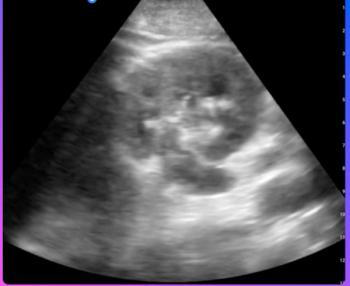
Teleradiology: Love, Loathe, or Laissez-Faire?
There are few buzzwords likelier to get a strong reaction from radiologists than the one mentioned above. Bring it up, and folks can get animated, agitated, or downright angry. Part of what makes this such a tinderbox is that “teleradiology” refers to a heterogeneous group of entities, and it’s easy to dismiss them all with a single condemning sweep of the hand.
There are few buzzwords likelier to get a strong reaction from radiologists than the one mentioned above. Bring it up, and folks can get animated, agitated, or downright angry. Terms like “commoditization” and “predatory competition” follow, and the tone is often one of us-versus-them.
Part of what makes this such a tinderbox is that “teleradiology” refers to a heterogeneous group of entities, and it’s easy to dismiss them all with a single condemning sweep of the hand. However, a signed, formal report of a 2AM study from an ABR-certified, fellowship-trained radiologist with multiple state licensures should not be tarred with the same brush as a one-sentence “prelim” assessment generated by a mysterious individual on another continent with neither verifiable credentials nor any lasting accountability for his work.
Economics provide another major flashpoint. Simply put, teleradiology allows more competition into local markets for imaging services, and nobody likes the idea of being underbid or outperformed. It can be tempting to convince others (or ourselves) that such potential competitors are inherently flawed, and should thus be hobbled or entirely prevented from competing. Such machinations can be easier than, say, working to make one’s own operation more competitive.
Despite such efforts, teleradiology has grown and prospered. Why? Business basics: Supply and demand, not just in terms of imaging-studies and their interpretations but also referring to the teleradiologists themselves. A prospective telerad may have a number of demands that aren’t being supplied by local brick-and-mortar jobs in hospitals or imaging centers-a desire for specific or flexible hours, reluctance or inability to commute, etc. Maybe the telerad got sick of departmental politics, or the interruptions and aggravations of working in an office; s/he just wants to be left alone to read studies.
There’s another motivation to seek telerad work: Compensation for productivity. With most conventional radiology jobs, one negotiates a salary in advance. Adjustments (“bonuses”), if any, for the amount of work one actually does tend to be small relative to the salary itself…and if senior members of the team appear to be earning more while doing less, it can be frustrating for the hardworking junior staff. With telerad, there’s more of an “eat what you kill” system, and one can find one’s own balance between work and reward.
For those still wishing to keep the teleradiology-wave from encroaching their own turf, there have been more than a few write-ups on the subject already. You know the drill: Cover your own call-shifts, be available to your referrers, provide tip-top service so your customers don’t even think of going elsewhere, etc. Consider another angle, however: Try using honey instead of vinegar to keep some of your would-be telerads from going that route. Listen to what they want from their workplace. Don’t be rigidly adherent to your ideas about when and how they should be working, or how they should be paying their dues with blood, sweat, and tears like you remember doing, back in your day. If it’s “my way or the highway,” some folks will opt for the latter.
Newsletter
Stay at the forefront of radiology with the Diagnostic Imaging newsletter, delivering the latest news, clinical insights, and imaging advancements for today’s radiologists.




























